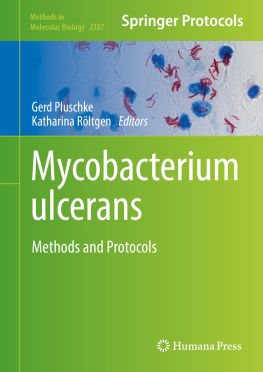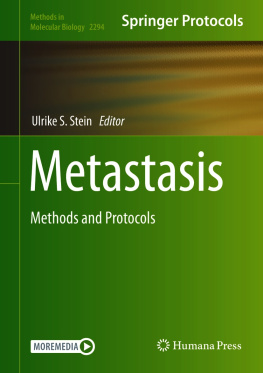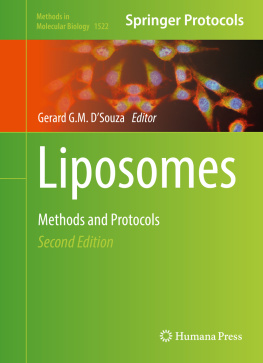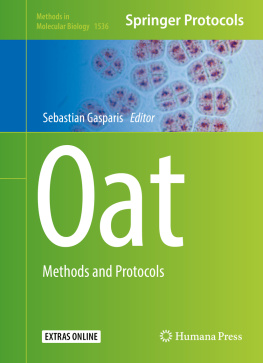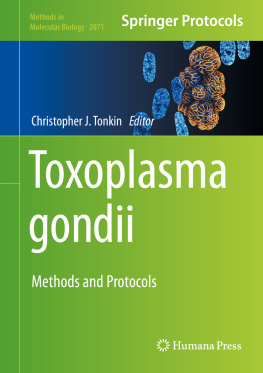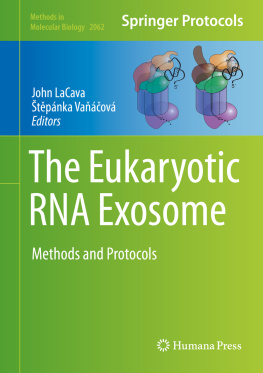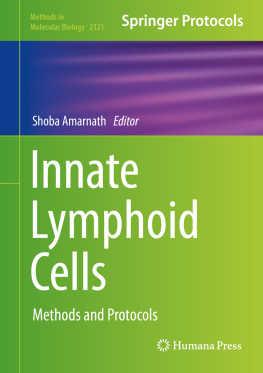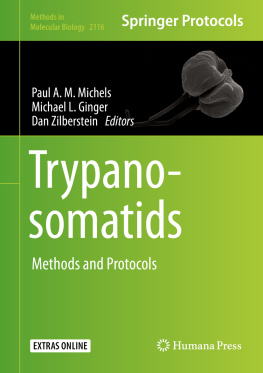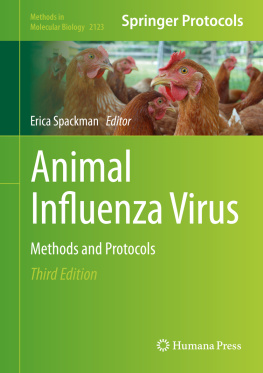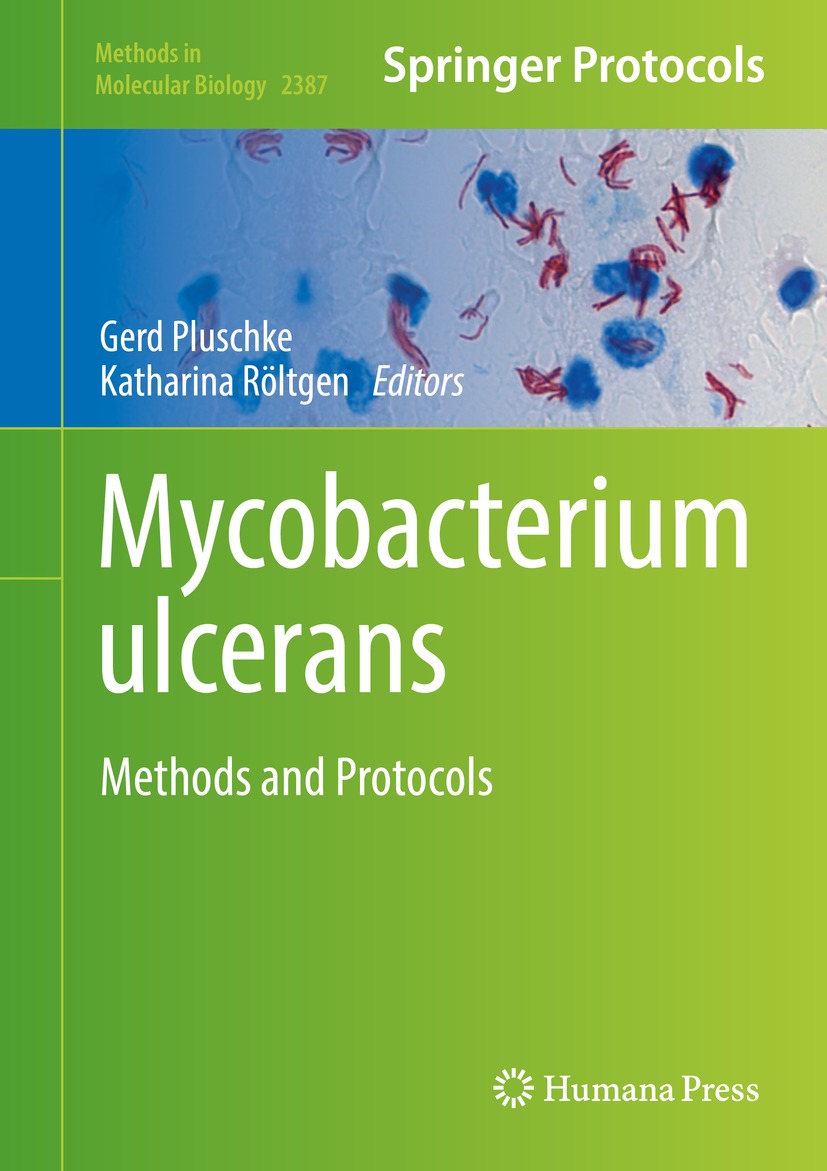Volume 2387
Methods in Molecular Biology
Series Editor
John M. Walker
School of Life and Medical Sciences, University of Hertfordshire, Hatfield, Hertfordshire, UK
For further volumes: http://www.springer.com/series/7651
For over 35 years, biological scientists have come to rely on the research protocols and methodologies in the critically acclaimed Methods in Molecular Biology series. The series was the first to introduce the step-by-step protocols approach that has become the standard in all biomedical protocol publishing. Each protocol is provided in readily-reproducible step-by-step fashion, opening with an introductory overview, a list of the materials and reagents needed to complete the experiment, and followed by a detailed procedure that is supported with a helpful notes section offering tips and tricks of the trade as well as troubleshooting advice. These hallmark features were introduced by series editor Dr. John Walker and constitute the key ingredient in each and every volume of the Methods in Molecular Biology series. Tested and trusted, comprehensive and reliable, all protocols from the series are indexed in PubMed.
Editors
Gerd Pluschke
Swiss Tropical and Public Health Institute, Basel, Switzerland
Katharina Rltgen
Stanford School of Medicine Department of Pathology, Stanford University, Stanford, CA, USA
ISSN 1064-3745 e-ISSN 1940-6029
Methods in Molecular Biology
ISBN 978-1-0716-1778-6 e-ISBN 978-1-0716-1779-3
https://doi.org/10.1007/978-1-0716-1779-3
The Editor(s) (if applicable) and The Author(s), under exclusive license to Springer Science+Business Media, LLC, part of Springer Nature 2022
This work is subject to copyright. All rights are solely and exclusively licensed by the Publisher, whether the whole or part of the material is concerned, specifically the rights of translation, reprinting, reuse of illustrations, recitation, broadcasting, reproduction on microfilms or in any other physical way, and transmission or information storage and retrieval, electronic adaptation, computer software, or by similar or dissimilar methodology now known or hereafter developed.
The use of general descriptive names, registered names, trademarks, service marks, etc. in this publication does not imply, even in the absence of a specific statement, that such names are exempt from the relevant protective laws and regulations and therefore free for general use.
The publisher, the authors and the editors are safe to assume that the advice and information in this book are believed to be true and accurate at the date of publication. Neither the publisher nor the authors or the editors give a warranty, expressed or implied, with respect to the material contained herein or for any errors or omissions that may have been made. The publisher remains neutral with regard to jurisdictional claims in published maps and institutional affiliations.
Cover Caption: Mycobacterium ulcerans bacilli in the context of infected tissue.
This Humana imprint is published by the registered company Springer Science+Business Media, LLC part of Springer Nature.
The registered company address is: 1 New York Plaza, New York, NY 10004, U.S.A.
Preface
The first description of chronic skin ulcers consistent with the pathology of Mycobacterium ulcerans infection dates back to the end of the nineteenth century, but the causative agent was described only 80 years ago in patients from southeast Australia. M. ulcerans disease is named Buruli ulcer (BU) after a geographic area in Uganda that was severely hit by a BU epidemic. Since then, cases of BU have been reported in 34 countries, with the main burden being observed in children in West and Central Africa. Recently, a steady increase in the incidence of BU in Victoria, Australia, and the occurrence of M. ulcerans infections in the local possum population demonstrated that control of this neglected disease, for which transmission pathways are still not fully understood, is difficult. In 1998, the WHO launched the Global Buruli Ulcer Initiative to coordinate BU control and research on the disease. Less than 200 scientific papers on BU had been published at that time, and intensified research since then is reflected by currently close to 2000 publications on BU.
Of key importance for our understanding of BU was the description of the cytotoxic macrolide toxin mycolactone by George et al. in 1999. Mycolactone destroys mammalian tissues by apoptosis and has immunosuppressive activities. Histopathological analysis of infected tissue has shown a striking lack of infiltrating immune cells in necrotic areas surrounding clusters of extracellularly replicating mycobacteria, indicating a radical mechanism of immune evasion. Recent advances in the synthesis, handling, and detection of mycolactone have opened up new possibilities to study the effects of this fascinating toxin. M. ulcerans carries the giant plasmid pMUM that encodes the polyketide synthases required for mycolactone synthesis. Acquisition of this plasmid was a key step in the emergence of M. ulcerans from the environmental M. marinum. Complete genome sequences of M. ulcerans isolates have revealed >98% nucleotide sequence identity with the genome of M. marinum. In addition to the acquisition of pMUM, M. ulcerans has accumulated multi-copy insertion sequences, many pseudogenes, and multiple DNA deletions. While the observed reductive evolution indicates that M. ulcerans is developing into a niche-adapted specialist, there isin spite of the insights given by comparative genome analysesstill no conclusive information on environmental reservoirs of the pathogen. Cultivation of M. ulcerans from environmental samples is hindered by the extremely slow growth rate of the pathogen, hampering also the generation of genetically modified M. ulcerans mutants for functional analyses. Two standardized multiplex real-time PCR assays for the detection of M. ulcerans are now widely used for clinical diagnosis and analysis of environmental samples. Genomic analyses have revealed that M. ulcerans has diverged into several ecovars and that local clonal complexes are found in individual BU endemic regions, which speaks against the existence of highly mobile reservoirs. BU control is currently focused on early diagnosis and rapid initiation of an 8-week course of combination antibiotic therapy, underscoring the importance of active BU surveillance. In remote areas of Africa that are most affected by the disease, efforts are made to facilitate decentralized diagnosis and treatment by the development of M. ulcerans antigen or mycolactone-based point-of-care diagnostic tests and faster and simpler drug treatment modalities.
We sincerely hope that this edition of methods and protocols for BU research will motivate scientists to develop research activities on BU, which is still an under-researched field of infection biology.

